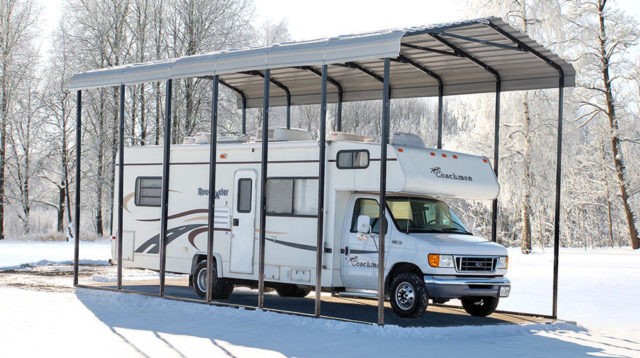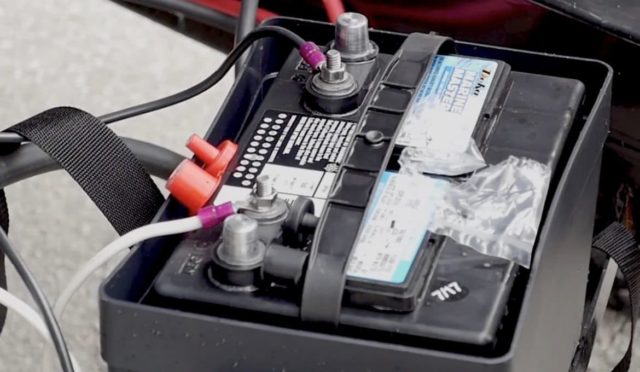Winter is quickly approaching and it’s time to put your RV into storage. However, you’ll want to follow these RV maintenance tips before stepping away. Otherwise, you may not be so happy with how your RV looks when spring returns.
Inspect and Repair Sealants
The first thing you need to check would be your interior sealants — if you have done winterization in the previous years. If this is your first year having an RV over the winter, then, you’ll need to apply fresh sealants everywhere.
Inspect all seams, windows, and roofs and repair or reapply sealants anywhere cold air is leaking in. Similarly, you may also want to clean and treat the rubber roof before winter arrives.
Drain the Water System
You’d be surprised how many people forget about this critical RV maintenance tip and wake up to frozen pipes and tanks (yikes!).
The first step is to drain fresh water and the waste tanks. Next, you’ll need to pump non-toxic antifreeze rated to -50 degrees throughout your RV’s water system.

Cover Up Your RV
If your RV will remain outdoors through the winter, you’d want to cover it up with proper materials. Regular plastic tarps aren’t going to do the job, and you’ll pay a much higher price later on for going cheap with covers.
Therefore, invest in a cover specifically designed for RV storage. You’ll be able to reuse the cover for many years, so it’s smarter to just buy something with higher quality anyways.
Find a Safe Spot for Winter Storage
Again, if you’re parking the RV outside, make sure you find a safe spot for your winter storage. Avoid parking under any large branches because trees can get brittle during wintertime and the last thing you want is a branch crashing through your RV.
Also, try to find somewhere nice and flat instead of parking on a slope. Similarly, try your best to find somewhere sheltered from the wind, or at least won’t get too windy during the harsh weather.
Protect Your Tires
Another critical RV maintenance tip is to protect your tires. First of all, always deflate all your tires to avoid any damages caused by a change in the air pressure. Next, check with an RV dealership and purchase some tire covers.
However, if you have a legitimate RV body cover, it should be able to cover the tires as well.

Check Batteries
The next thing you want to do is check the batteries. Then, disconnect the batteries and store them somewhere cool and dry, because a cooler (but not cold) temperature slows down the power loss.
Make sure your batteries are fully charged before putting them away because a half-charged battery freezes more easily than a fully-charged one.
Prep the Exteriors
While not necessary, you may want to wash and wax your RV exteriors since oxidization will inevitably dull the outsides. Just make sure whatever you use is actually RV-approved.
Defend Against Rodents and Critters
It’s cold outside, and little animals, like mice and squirrels would want to find a warm and comfy spot to hide. Sadly, these little things will chew through your wires and electrics, and that’s why rodent-proof measurements are vital.
Therefore, make sure all food is removed from your RV, conduct a thorough kitchen deep cleaning. Also, seal anywhere you think critters will be able to come through.
Check On Your RV Regularly Throughout the Winter
Finally, RV winter storage is not a once-and-for-all process. Rather, you need to check your RV regularly throughout the winter. For example, do a quick inspection every few weeks and look for any exterior damages or traces of critters.
Featured Image Credit: Signal Connect


